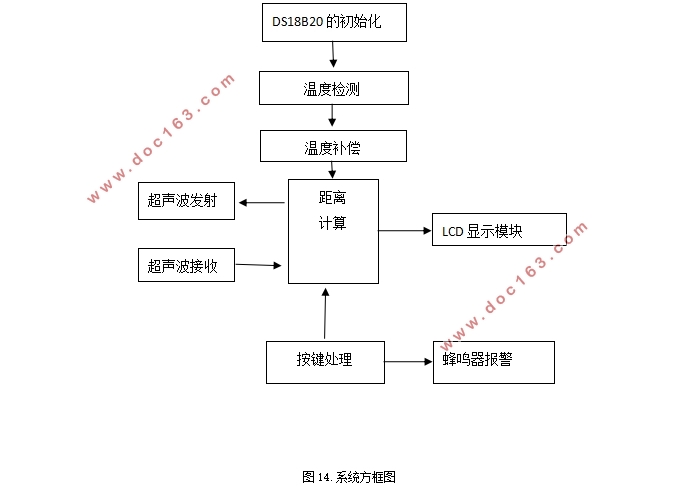基于单片机的超声波接近开关的设计

基于单片机的超声波接近开关的设计(论文10200字)
摘要:本文使用超声波相关原理,指出一种利用单片机的物体监控系统,硬件部分所使用的单片机是STC89C52。它主要的组成部分有信号发送部分,信号的接收部分,温度检测电路和报警电路。这次系统的主要设计过程以STC89C52为主,利用超声波检测前方物体的距离,探测出前方物体的距离之后,传送到运算处理单元,与预设定的极限数值相互对比,如果对比结果小于预设定值时,单片机送出信号控制蜂鸣器工作。本文在介绍各系统功能的基础上,针对系统总构成设计方案进行论证,并在最后给出结果和误差分析。
关键字:单片机;超声波;接近开关;测距
Design of Ultrasonic Proximity Switch Based on Single Chip Microcomputer
Abstract: Using the principle of ultrasonic correlation, a design scheme of ultrasonic proximity switch based on STC89C52 is proposed. The hardware part adopts STC89C52 single chip microcomputer as the controller, mainly has ultrasonic transmission circuit, ultrasonic receiving circuit, temperature detection circuit and alarm circuit. This design is the use of STC89C52 single-chip and ultrasonic sensors to complete the range of alarm system production. STC89C52 mainly to use the ultrasonic detection of the object distance to detect the distance of the front object, sent to the microcontroller processing operations, and set the alarm distance value comparison, when the distance is less than the set value, the system issued a command to control the buzzer Call the police.On the basis of introducing the functions of each system, this paper demonstrates the design of the system, and gives the results and error analysis at the end.
Key words: Single chip; ultrasonic; proximity switch;
[资料来源:Doc163.com]

目 录
一.绪论 1
1.1超生波检测的意义 1
1.2研究背景 1
1.3研究现状 1
1.4设计任务主要要求 1
二.超声波应用的原理 2
2.1超声波的介绍 2
2.1.1 超声波的分类 2
2.1.2 超声波的物理性质 2
2.1.2.1 超声波的反射和折射 2
2.1.2.1超声波的衰减 2
2.1.2.2超声波的干涉 2
2.2 超声波检测系统原理 2
2.2.1 超声波传感器 2
2.2.2 超声波距离监控检测的方法 3
2.2.3接近开关工作原理 4
三.系统主要硬件结构电路 5
3.1 超声波发射电路 5
3.2 超声波接收电路 5
3.3 复位电路 6
3.4 时钟电路 7
3.5 检测电路 7
3.6 蜂鸣器电路 7
3.7温度测量电路 8
3.8 LCD显示电路 8
3.9 电源电路 9
四.系统硬件部分流程图 10
4.1 系统程序的总体结构框图 11
4.2 系统程序的运行流程 11
4.3 系统主程序流程图 12
4.4 40KHz超声波发送子程序 14
4.5 DS18B20温度采集程序 14
4.6 距离计算子程序 15
4.7 数据转换子程序 15
4.8 距离判断程序 16
五.影响系统准确性的因素 17
5.1 传感器的指向角 17
5.2 温度对系统的影响 17
5.2 监控盲区 18
六.实验过程及误差分析 19
6.1 实验前的注意项 19
6.2 误差分析及改进措施 19
七.结论 21
参考文献 22
致谢 22 [资料来源:www.doc163.com]
